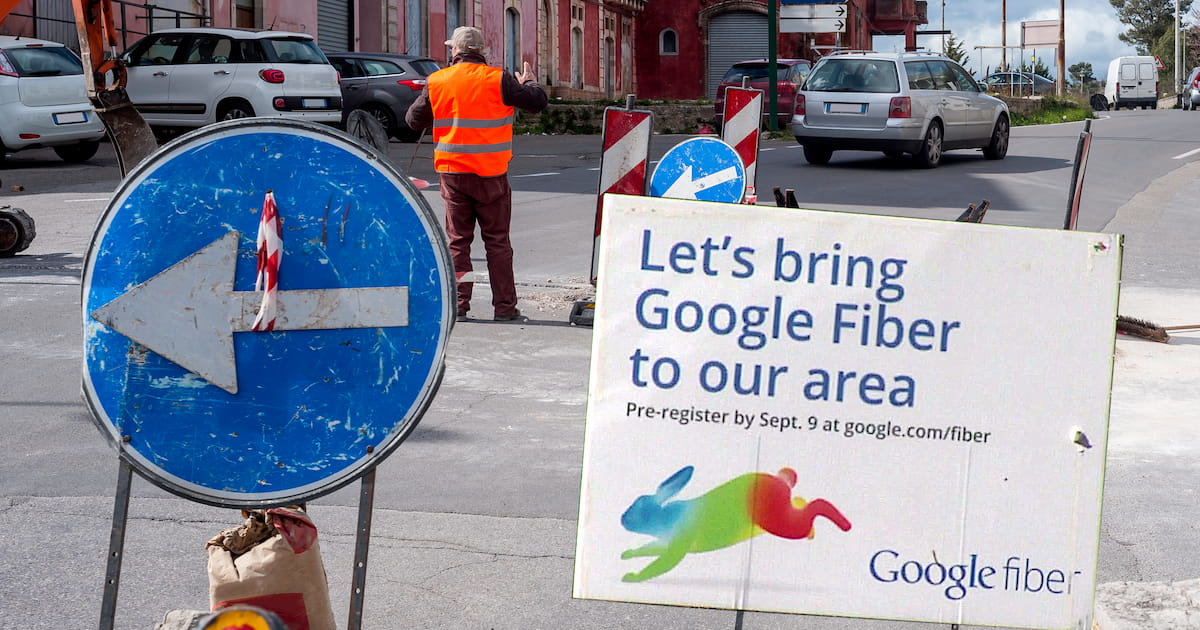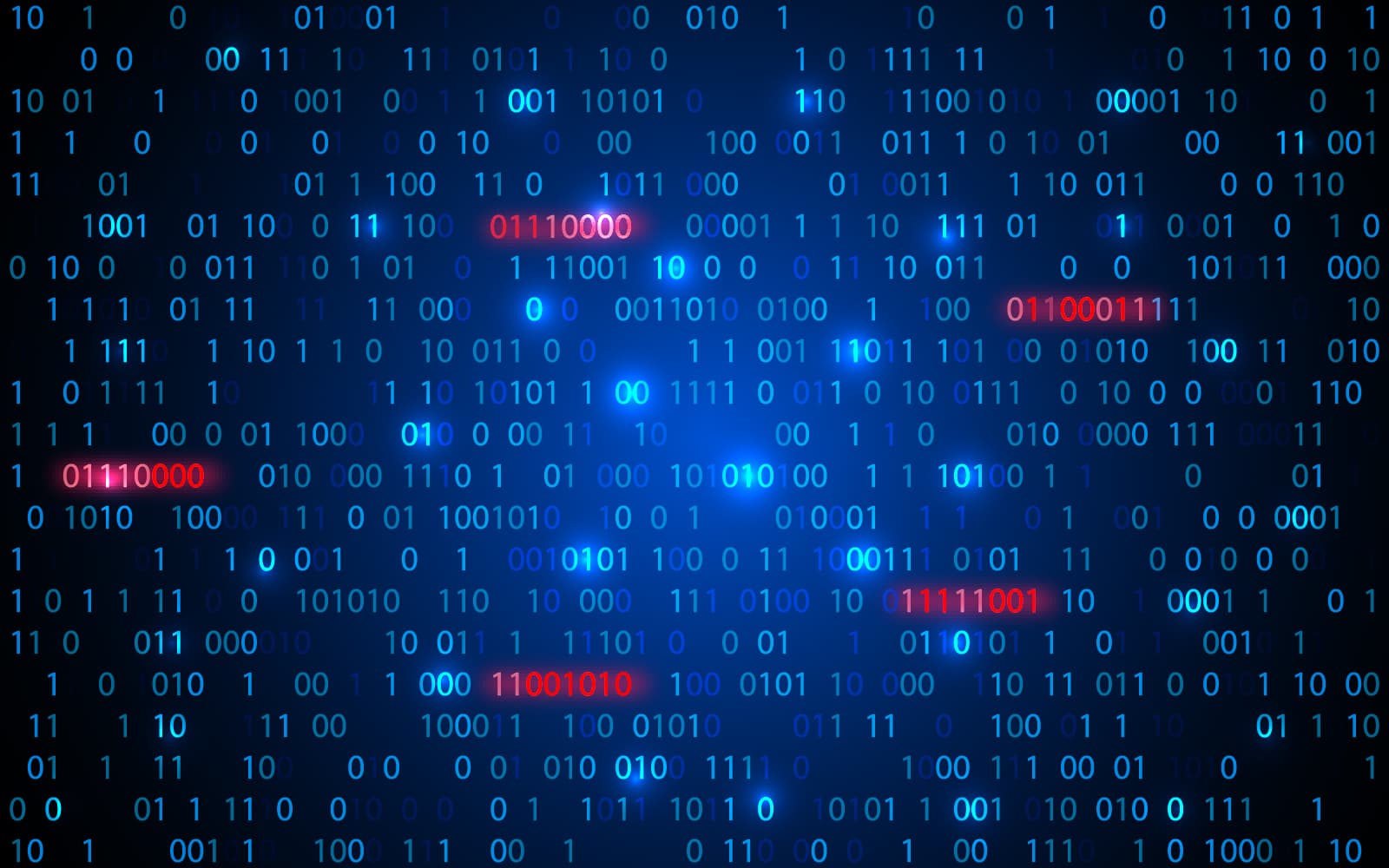How Fast Is Fiber?
Everything you need to know about the fastest internet technology
Nov 6, 2023 | Share
FAQ
Fiber is fast. Really fast. In fact, it’s the fastest way we have to transmit data, which is why having fiber internet in your home gives such a smooth internet experience. Even if you don’t have a fiber connection to your home, most of the internet is built out of fiber, so it’s a technology that we all use every time we visit a website.
It’s just that good.
But how fast is fast? How does fiber’s speed compare to other types of internet connection? Well, there’s a few different ways to measure internet speed, but the one that most people think about is download speed, so let’s take a look at that.
How fast does fiber get things done?
When most people talk about internet speed, they want to know how fast their internet connection can download a file or play a video. This depends on the download speed (or bandwidth) of your connection, and fiber is the clear winner in this category.
Most fiber providers offer speeds up to 1 Gbps (1,000 Mbps), but this is by no means the limit to fiber technology. Some providers already offer multigigabit speeds, such as AT&T’s 5 Gbps (5,000 Mbps) fiber plan. Google owns an undersea fiber-optic cable connecting North America and Asia that has a bandwidth of 60 Tbps (60,000,000 Mbps)—so unlike technologies like DSL, fiber still has plenty of untapped potential.1
But what does this mean in practical terms? Let’s take a look at how long it takes to download different types of media.
| Dial-up Internet Connection 50 kbps | Minimum Broadband Connection 25 Mbps | Fast DSL Connection 100 Mbps | Gigabit Fiber Connection 1,000 Mbps | |
|---|---|---|---|---|
| War and Peace2 (3 MB) | 8.0 min. | 1.0 sec. | 0.24 sec. | 0.02 sec. |
| The Beach Boys Pet Sounds3 (1.2 GB) | 2.2 days | 6.4 min. | 96.0 sec. | 9.6 sec. |
| Lord of the Rings Trilogy – Special Edition4 (61 GB) | 113.0 days | 5.4 hrs. | 81.3 min. | 8.1 min |
| Grand Theft Auto V (70 GB) | 130.0 days | 6.2 hrs. | 93.3 min. | 9.3 min |
| Library of Congress’ Digital Collections5 (74 TB) | 375.4 yrs. | 274.0 days | 68.5 days | 6.9 days |
As you may have noticed (and might have already known), having a fast connection becomes very important if you’re watching video or downloading software. Just downloading a recent video game is almost impossible without a decent internet connection and still requires a bit of forethought with most connections.
Pro tip:
Data storage is typically measured in bytes (B), while internet speeds are usually measured in bits (b). To find out why this matters, check out our article on Megabits vs. Megabites.
Fortunately, downloads that take hours or days on slower connections can be completed in a matter of minutes on a good fiber connection. All that saved time adds up, so the more you work with videos, software, and other large files, the more a high-speed fiber connection is worth it.
But, like, how fast does it go?
Download speed is what people are usually talking about when they want to know how fast your internet connection is, but fiber is fast in other ways too. In contrast to some other types of connection, fiber-optic cables literally transmit data at the speed of light!
…well, mostly.
It’s a bit more complicated than that. When people talk about the speed of light, they usually mean the speed of light in a vacuum. Light travels slower when it’s passing through another substance, such as water, air, or fiber-optic cable. Light travels about 31% slower in a fiber-optic cable, which means your data travels at 206,856,796 m/s.6 In other words, it takes a millisecond for every 206.9 kilometers of fiber your internet signal has to travel.
If you lived in Seattle and wanted to chat with a friend living in Tokyo, it would take your messages at least 23 milliseconds to travel through undersea cables to reach Japan. This slight delay is known as latency.
What about other lightspeed signals?
Fiber isn’t the only type of connection that sends information at the speed of light. Wireless connections like fixed wireless or satellite actually reach higher speeds since the speed of light is higher in air (or space) than it is in fiber. So why are fiber connections still faster?
The advantage of fiber-optics is that the light that passes through the cables is confined to the core through total internal reflection. This allows the signal to follow the cables as they curve and bend.
Wireless signals, on the other hand, must travel in a straight line. This makes it hard to send signals around the curved surface of the earth. That means to talk to your friend in Tokyo via satellite, your messages would have to travel all the way to Earth’s orbit and back, giving you a delay of at least 238 ms—ten times more delay than sending the information over fiber.
Is fiber fast in any other ways?
Another important measure of internet speed is upload speed, and fiber is once again the clear winner. While most online activities rely primarily on download speed, others, like livestreaming and video chat, need a good upload speed too.
Connections like cable and most types of DSL give you much lower upload speeds in comparison to your download speed. A cable connection with a download speed of 1,000 Mbps might give you an upload speed of only 35 Mbps.
Fiber, on the other hand, gives symmetrical upload and download speeds. That means that if you have a 1,000 Mbps plan, your upload speeds are 1,000 Mbps as well. This is especially useful for content creators like livestreamers and YouTubers.
Popular fiber internet providers
| Provider | Fiber speeds up to | Price | Customer rating | Availability | Get it |
|---|---|---|---|---|---|
| Up to 2,300Mbps | $49.99–$119.99/mo.* | 3.9/5.0 | 10 states on the East Coast | ||
| 5,000Mbps | $55.00–$250.00/mo.† | 3.7/5.0 | California and 21 other states in the South and Midwest | ||
| 8,000Mbps | $70.00–$150.00/mo.‡ | 4.4/5 | 26 cities and counties across the United States; 7 additional cities have Google Webpass | ||
| 940Mbps | $30.00–70.00/mo.§ | 3.6/5.0 | 16 states primarily in the Midwest and West | ||
|
| 5,000Mbps | $49.99–$154.99/mo.║ | 3.5/5 | 25 states including California, New York, and Texas | View Plans |
|
| 5,000Mbps | $40.00–$180.00/mo.** | 3.4/5.0 | New York, New Jersey, Connecticut and Pennsylvania | View Plans |

| 5,000Mbps | $59.95–$189.95†† | 4.0/5.0 | 49 states | View Plans |
Data as of 11/6/2023. Offers and availability may vary by location and are subject to change.
Read disclaimers.
Is fiber just better because it’s faster?
Fiber is better because it’s faster, it’s less prone to experience slowdowns, and it offers faster uploads speeds. Speed is definitely the reason so many people get excited about fiber, but its other advantages are also important factors.
Fiber signals travel farther
Signals sent over fiber-optic cables can travel farther than those transmitted over other connections without degrading. DSL and dial-up internet send electrical signals across copper telephone wires. As the signal travels along these wires, it begins to degrade the further it gets from the central office. This is why even in the early days of DSL, the backbone of the internet still used fiber-optic connections to get your data over long distances.7
Cable networks use coaxial cables, which are made of copper, just like telephone wires, but are protected by a woven copper sheath that shields the inner core of the cable. This shield allows the cables to carry high-frequency electric signals with low losses of signal quality.
Fiber-optic cable doesn’t use electrical signals, but instead uses different frequencies of light to send information. Fiber networks can be built with different light sources, from simple LEDs to high-powered lasers. Some of these can transmit data up to 4,000 km without significant signal degradation.8
This makes fiber a better choice than copper or coaxial cable for network infrastructure.
Fiber signals carry more data
So fiber-optic signals travel much farther than the electrical signals used in copper wires, but why is satellite—the undisputed long-distance champion of communication signals—so much slower? The answer comes down to the frequency of the transmission.
We measure electromagnetic waves in hertz (Hz), or how many waves occur in one second. Higher frequencies have shorter wavelengths, and thus the same amount of data fits into a shorter space on the carrier signal, getting information to its destination more quickly.
The powerful satellites used in traditional satellite internet use a frequency around 30 GHz, which means that the transmission has a wavelength of about 1 cm.12 The signal in a fiber-optic cable has a frequency of around 200,000 GHz and a wavelength around 1500 nm. Because fiber-optic signals’ frequency is so much higher, more information can be sent across it in the same amount of time. The amount of data transferred can be increased even further through multiplexing—sending multiple signals across a connection simultaneously by giving each one a unique frequency, phase, or other attribute.
How fast can fiber get?
We don’t yet know the maximum amount of data it’s physically possible to get through a single optical fiber, but it’s a lot. The current record for transmission over a single fiber, set in 2017, is 10.16 Pbps (Petabits per second).9 That’s 10,160,000,000 Mbps, and it could get even faster as multiplexing technologies improve.
Another technological development—photonic chips—could also replace current optical data encoders, dramatically increasing fiber bandwidth. The current record for one of these chips was made by researchers at the Technical University of Denmark, who transmitted data at 1.84 Pbps across several miles.11
Every type of connection will get faster as technologies like multiplexing improve, but some will benefit much more than others. For example, it might be possible to increase cable speeds up to 10 Gbps, which is enough to compete with current residential fiber networks.10 While 10 Gig speeds would be a massive improvement over current cable connections, the cutting edge in fiber research is already over one million times faster.
Anyway you look at it, fiber is the fastest type of internet connection available and it doesn’t look like that’s changing anytime soon.
Wow, fiber seems pretty great
Fiber is pretty great, which is why we almost always recommend it over other types of connections if it’s available in your area. It’s also often a cheaper option than slower connection types, so it’s worth considering even for those on a tight budget.
Sources
- Ryan Whitwam, ExtremeTech, “Google’s ‘FASTER’ Undersea Cable Goes Online with 60 Tbps of Bandwidth,” June 30, 2016. Accessed January 18, 2021.
- Approximate size with simple ASCII encoding.
- 24 bit, 96 KHz uncompressed pulse-code modulation format.
- 4K UHD Format
- Publicly available digital collections only as of 2009. See Matt Raymond, Library of Congress Blog, “How ‘Big’ Is the Library of Congress?” February 11, 2009. Accessed January 18, 2021.
- Francesco Poletti, et al., Nature Photonics, “Towards High-Capacity Fiber-Optic Communications at the Speed of Light in Vacuum,” March 24, 2013. Accessed January 18, 2021.
- Jack H. Winters and Richard D Gitlin, IEEE Transactions on Communications 38.9, “Electrical Signal Processing Techniques in Long-Haul, Fiber-Optic, Systems.” 1990. Accessed August 1, 2021.
- Xiang Liu, iScience, “Evolution of Fiber-Optic Transmission and Networking Toward the 5g Era.” December 20, 2019. Accessed August 1, 2021.
- Daiki Soma et al., Journal of Lightwave Technology, Vol. 36, No. 6, “10.16-Peta-B/s Dense SDM/WDM Transmission Over 6-Mode 19-Core Fiber Across the C+L Band,” March 15, 2018. Accessed December 9, 2021.
- Bernie Arnason, Telecompetitor, “Cable One Plots Course for 10 Gbps Broadband to Compete with Fiber,” November 19, 2021. Accessed December 9, 2021.
- Arvad Jørgensen, et al., Nature Photonics, 16. “Petabit-per-second data transmission using a chip-scale microcomb ring resonator source,” October 20, 2022. Accessed November 17, 2022.
- Alexa Aguilar, et al., AIAA Scitech 2019 Forum, “Tradespace exploration of the next generation communication satellites.” 2019. Accessed May 16, 2023.
Disclaimers
*w/ Auto Pay. Available in select areas.
#Available in select areas only. Price per month with Auto Pay & without select 5G mobile plans. Fios plan prices include taxes & fees.
†Speeds based on wired connection. Actual speeds may vary. For more info, go to www.att.com/speed101.
Price after $5/mo Autopay & Paperless bill discount (w/in 2 bills). Plus taxes & fees. Monthly State Cost Recovery Charge in TX, OH, NV applies. One time install chrg may apply. Ltd. avail/areas. Call or go to www.fiber.att.com to see if you qualify.
Price after $5/mo Autopay & Paperless bill discount (w/in 2 bills). Plus taxes & fees. Monthly State Cost Recovery Charge in TX, OH, NV applies. Ltd. availability/areas.
‡Terms and Conditions: Plus taxes and fees. Service not available in all areas. If you live in an apartment or condo, Google Fiber’s ability to construct and provide Fiber is subject to the continued agreement between Google Fiber and the property owner. Upload/download speed and device streaming claims are based on maximum wired speeds. Actual Internet speeds are not guaranteed and may vary based on factors such as hardware and software limitations, latency, packet loss, etc
§Speed may not be available in your area. Maximum download/upload speed of up to 940 Mbps via a wired connection. Paperless billing required. Taxes and fees apply. Offer details. Offer includes professional installation at customer’s eligible location.
║w/ Auto Pay & Paperless Bill per month. Max speeds are wired. Wi-Fi, actual & average speeds vary. One-time charge on disconnect applies. In select areas where available.
**w/Auto Pay & Paperless Bill. Terms apply. Not available in all areas.
††with a 12 month contract.
Author - Peter Christiansen
Peter Christiansen writes about satellite internet, rural connectivity, livestreaming, and parental controls for HighSpeedInternet.com. Peter holds a PhD in communication from the University of Utah and has been working in tech for over 15 years as a computer programmer, game developer, filmmaker, and writer. His writing has been praised by outlets like Wired, Digital Humanities Now, and the New Statesman.
Editor - Aaron Gates




